Everything
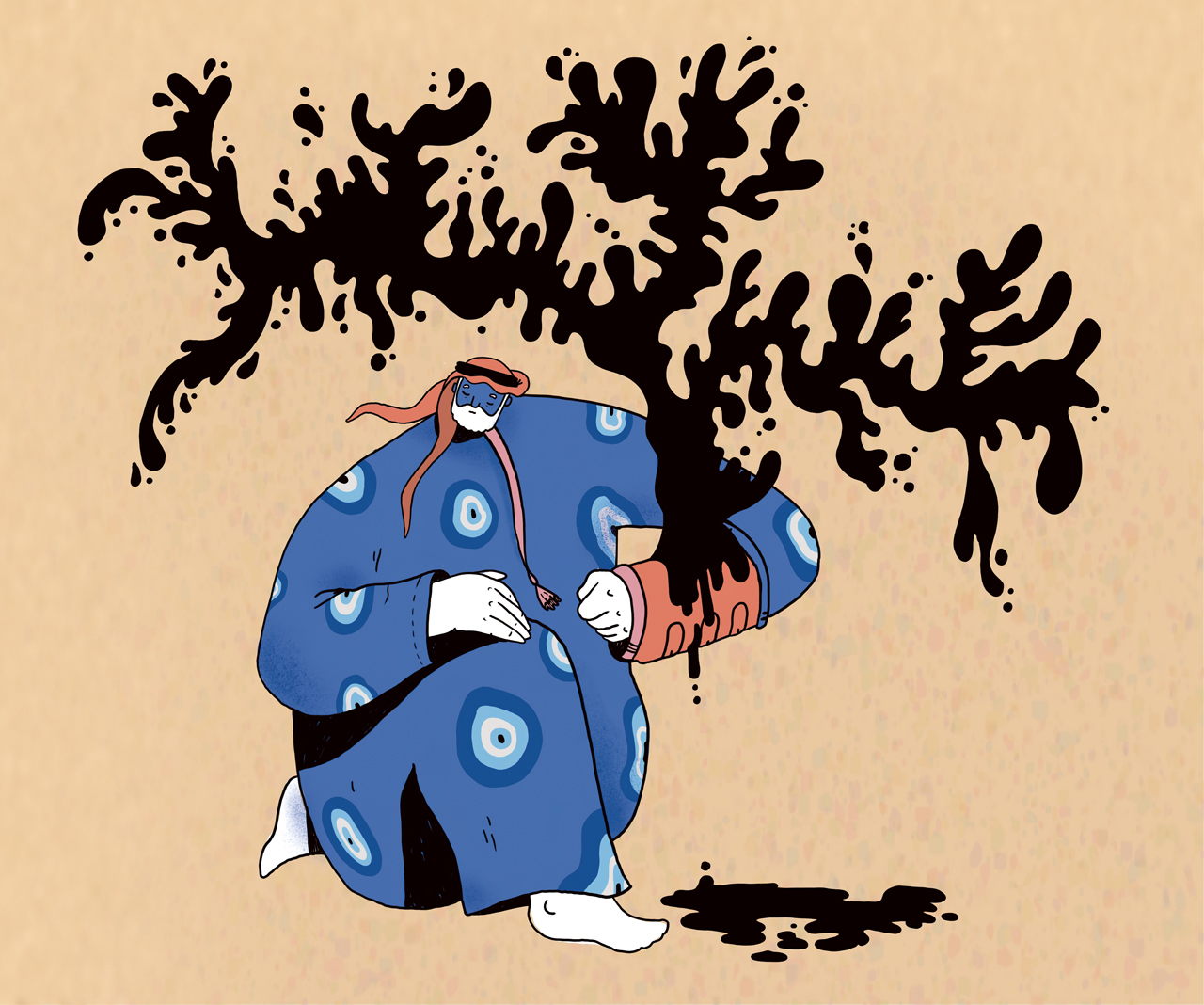
“I discovered the word that describes what I am, which is ambivert, I’m an ambivert,” laughs artist and graphic designer Sultan Al Ramahi. “Someone mentioned the word to me like two months ago: an extroverted introvert, right? I can go out on a walking tour with a complete stranger and talk non-stop about the buildings of Abu Dhabi or I could just sit at home and not do anything for five days.”
“I think you asked a good question, because I’m trying to understand myself why I [feel] rushes of energy one minute and then I need to rest,” Al Ramahi continues. “But when someone says, ‘Meet me here in 10 minutes,’ I’ll be there in a second.”
The “good question” I asked was simply: who are you? I asked it after spending 30 minutes with Al Ramahi and his rollercoaster thought processes. He is calm, private, and thoughtful one minute and then full of excited, continuous chat the next. He’s a very likeable subject to interview, provides enjoyable company, and I can see why strangers are lining up to take one of his eccentric tours of the city he’s so passionate about.
The tours are actually a side hustle (albeit an unpaid one) that came about thanks to his original side hustle, “Vectors and Stuff”. An ingenious graphic design project that can be seen on Instagram, one that endorses some of the capital’s best architecture. It started out as an assignment for Abu Dhabi’s Urban Planning Council, where Al Ramahi was working at the time, producing a small number of 2D digital line drawings of well-known Abu Dhabi landmarks. The designs were pretty much forgotten until early 2017 when Al Ramahi came across his work again and posted a selection of the vectors on his private Instagram page, arousing a response of nostalgia and excitement from his followers.
“They were just simplified diagrams of these buildings, but I liked them. I started posting them online and people were really liking them [as well]. So about two years ago, I set up a separate non-private Instagram account called @vectorsandstuff and posted a few more,” Al Ramahi recalls, who says he initially decided to stay anonymous on the account. “Suddenly, I made one of a really old building from Abu Dhabi, one I remembered from being a kid, and I posted it, and people responded, ‘Oh my god, yes, I love this, I love this.’”
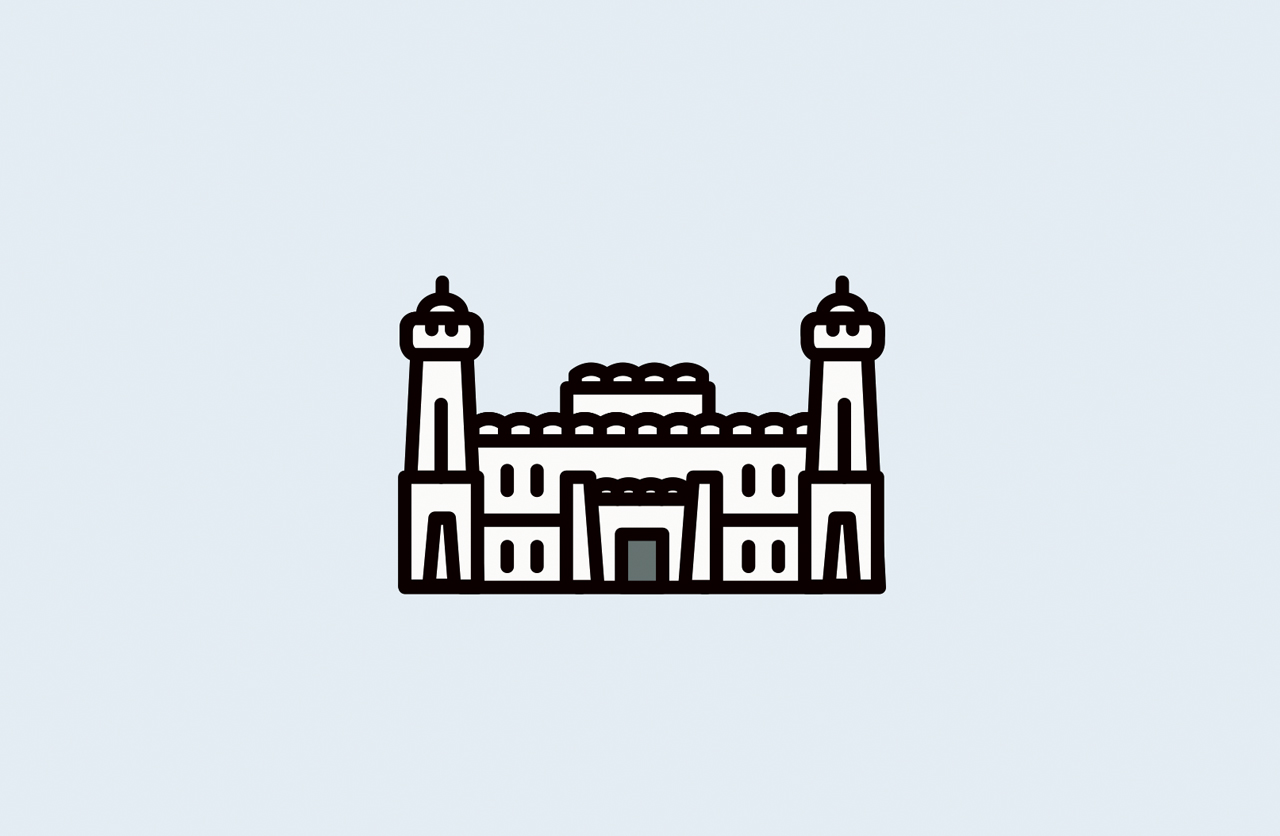
Al Ramahi continued to sporadically post, alongside snippets of information about the building and spaces in his drawings and asked followers to help fill the gaps in his knowledge. He started working on new vectors too.
“I let it grow organically, I really haven’t done any promotion of it until recently. I would just post now and again, and people just loved it.”
Al Ramahi, who was born in Abu Dhabi, lived in the capital until he was eight years old and moved to Singapore with his family in 1998. They returned to the UAE several times between 2003 and 2007, before Al Ramahi left the Emirate again in 2008 to study architecture and fine art at Washington State University. Since 2013, he has called Abu Dhabi his full-time home.
“Over the years, Abu Dhabi, like Dubai – but maybe not as quickly as Dubai – has been constantly changing. You blink an eye and there’s a new development out of nowhere. You’re like, ‘where did this come from? What is this?’” he says. “I think what happened was I started doing these graphic designs from drawings and masterplans of buildings we had at work.”
Al Ramahi has now designed 135 vectors, a mixture of modern buildings including the Cleveland Clinic, Louvre Abu Dhabi and the Gate Towers. Historical and recognisable landmarks such as Sheikh Zayed Grand Mosque and the circular Aldar HQ. Weird and wonderful installations such as an Asian pagoda, a dolphin, mushrooms, and an eggplant. And even buildings that no longer exist such as the original 20 minaret Al Fahimi Mosque which used to stand on Airport Road. Other drawings include those of the Jebel Hafeet Beehive Tombs, Umm Al Nar Cemetery and Al Baynuna Tower – which is one of nine buildings in the Emirate that are home to giant golf ball decorations, and there’s even space for nature in the form of the Abu Dhabi mangroves.
“The oldest building is obviously Qasr Al Hosn. Well, the oldest surviving building,” explains Al Ramahi. “Many of the first towers were built with seawater inside the cement so they deteriorated pretty quickly and had to be knocked down. There were buildings here before the 1960s, but they were eventually all knocked down too, and new buildings took their place. So, I’m trying to think of them too.”
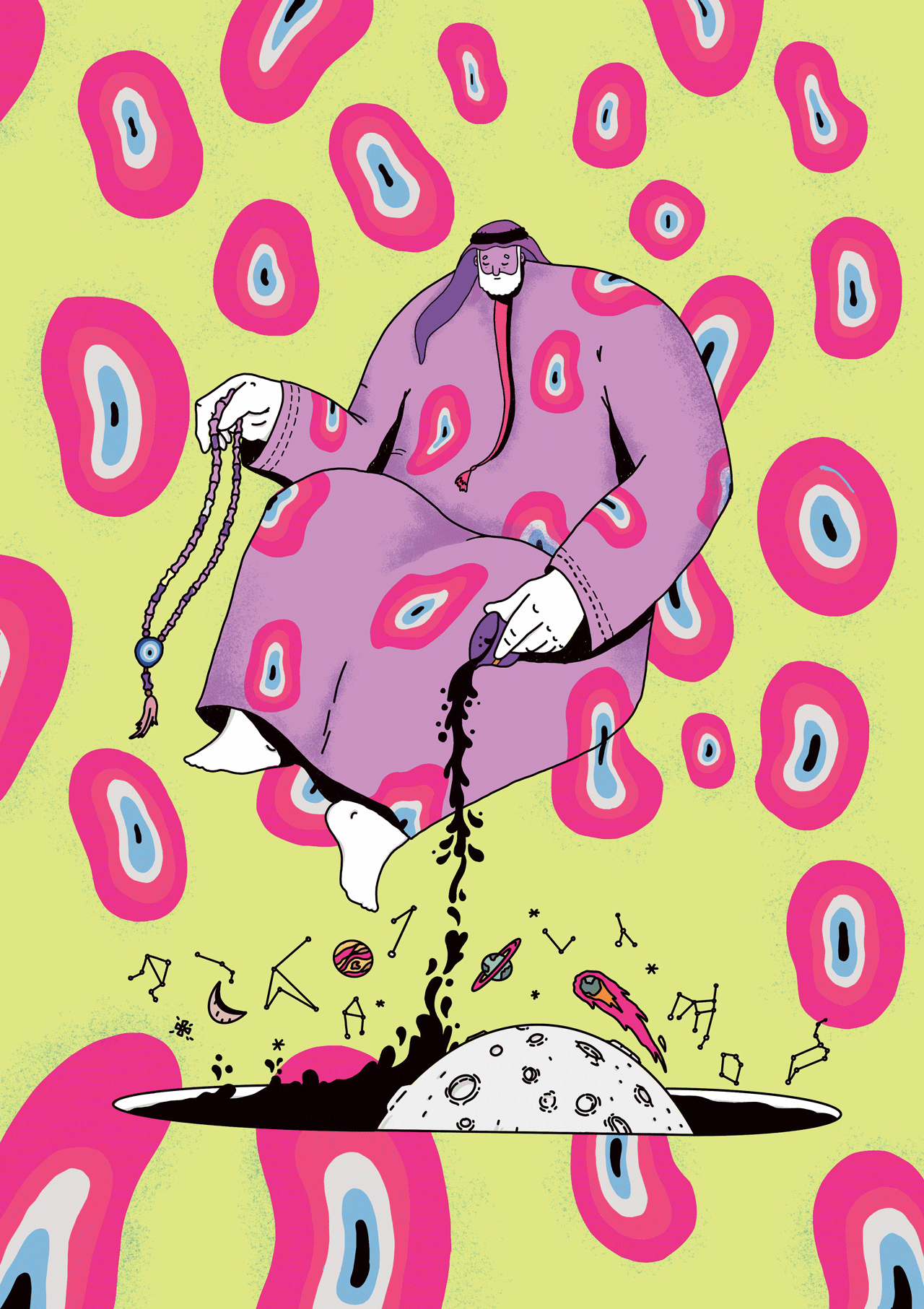
Does he have a favourite?
“It’s a place called the Hamed Centre in the Madinat Zayed neighbourhood. The architecture from the outside is okay, it’s nothing special, but it’s because I used to go there as a child,” Al Ramahi explains. “It used to be the video game centre, the place for modern fashion and if you wanted to buy anything counterfeit. To obtain a game from overseas it would take so much time and it was expensive. Here, you’d find it a week after it came out in Europe or the States and you’d buy it for nothing!” He laughs before continuing more thoughtfully, “What’s interesting is these gaming stores used to get raided all the time, but they still survived. Obviously with everything going digital and people finding video games online, it’s getting harder and harder for the sellers. It’s interesting to see which of these stores are surviving for now, and which ones have closed.
“I think one of the biggest aspects of the place is witnessing the changing demographics of Abu Dhabi,” he continues. “These gaming stores were all owned by South Asian people, there was always either Indian or Pakistani men who were holding the stores. Now I go back there and this whole selection of stores are catering to the African diaspora instead. It’s barber shops, clothing stores and catering specifically to African people who have been increasing in numbers in Abu Dhabi. Then there’s a Chinese herbal tea shop, which is something completely new for the Hamed Centre. There’s a Chinese travel agency too, and before, the whole place was run by South Asian men. It’s really interesting to see the changes.”
Al Ramahi is finding himself visiting places like the Hamed Centre more and more since he began offering to take people on tours of the places he recreated in his vectors.
“It started with a tour for an architectural group from the United States who were here on a kind of diplomatic visit. They were all architectural photographers, and they were focused on modern heritage buildings and buildings from the 60s, 70s and 80s,” Al Ramahi recalls. “I mapped out a whole tour and gave them a really basic architecture lesson and overview. The second tour was with Her Excellency, The Minister of Culture, and after that it’s been smaller tours.”
Al Ramahi is keen to show visitors that there is more to the Emirate than its skyscrapers. “Abu Dhabi is a very multicultural, contemporary city and you’re always surrounded by different nationalities. That’s what it is on the ground, but the architecture itself isn’t, you know, a standout,” he notes. “There are modern buildings with a touch of heritage, post Modernism, a bit of Brutalism. When we got these designers, architects or artists to visit, I took on the role of driving them around the city and stopping to look at these buildings. A lot of them really loved the old buildings of Abu Dhabi. They’re expecting all the gloss of the skyscrapers but in the end, an old building has this charm – it looks deteriorated, like it might break down any day, but it has its charm.”
And the tours aren’t just reserved for dignitaries and those visiting Abu Dhabi. “Someone just messaged me on Instagram and asked for a tour,” says Al Ramahi. “We toured for three hours. It’s been fun, especially during the COVID period last year once restrictions eased. I was very happy to do free tours as something to do.”
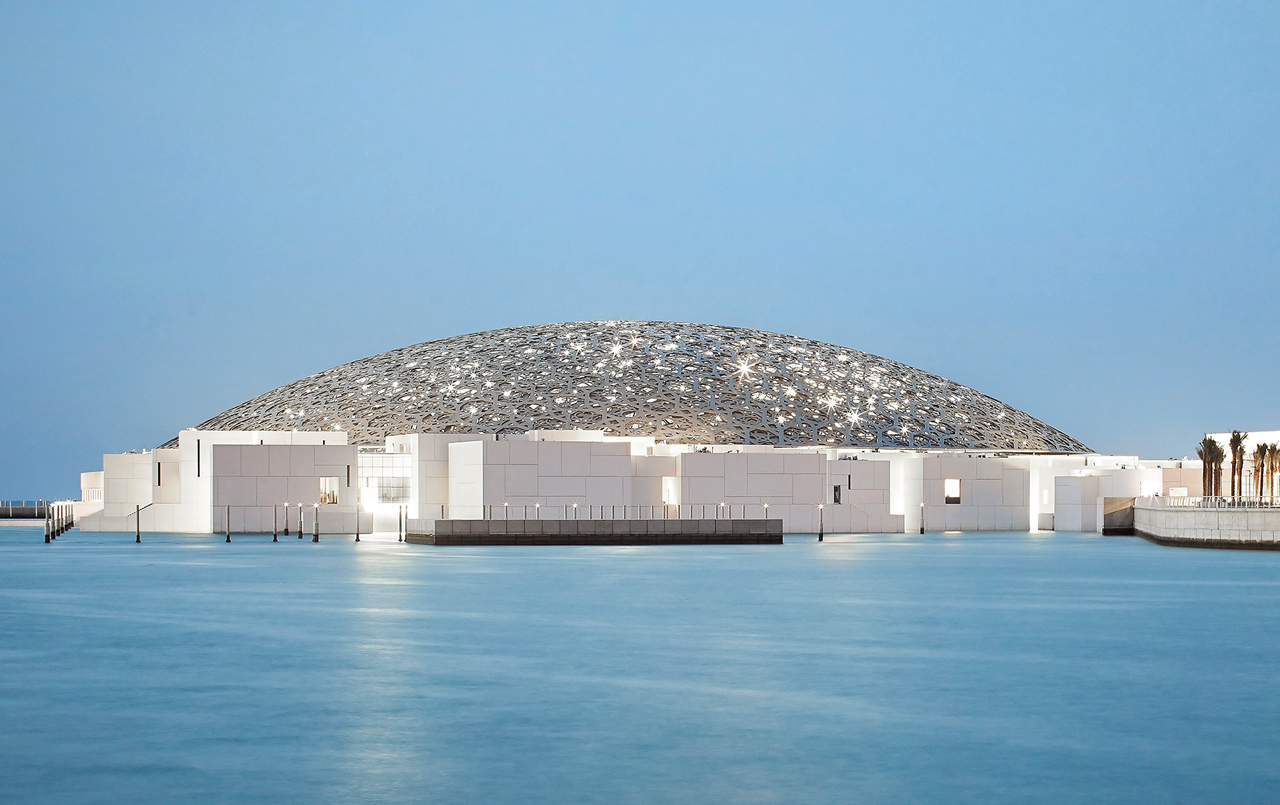
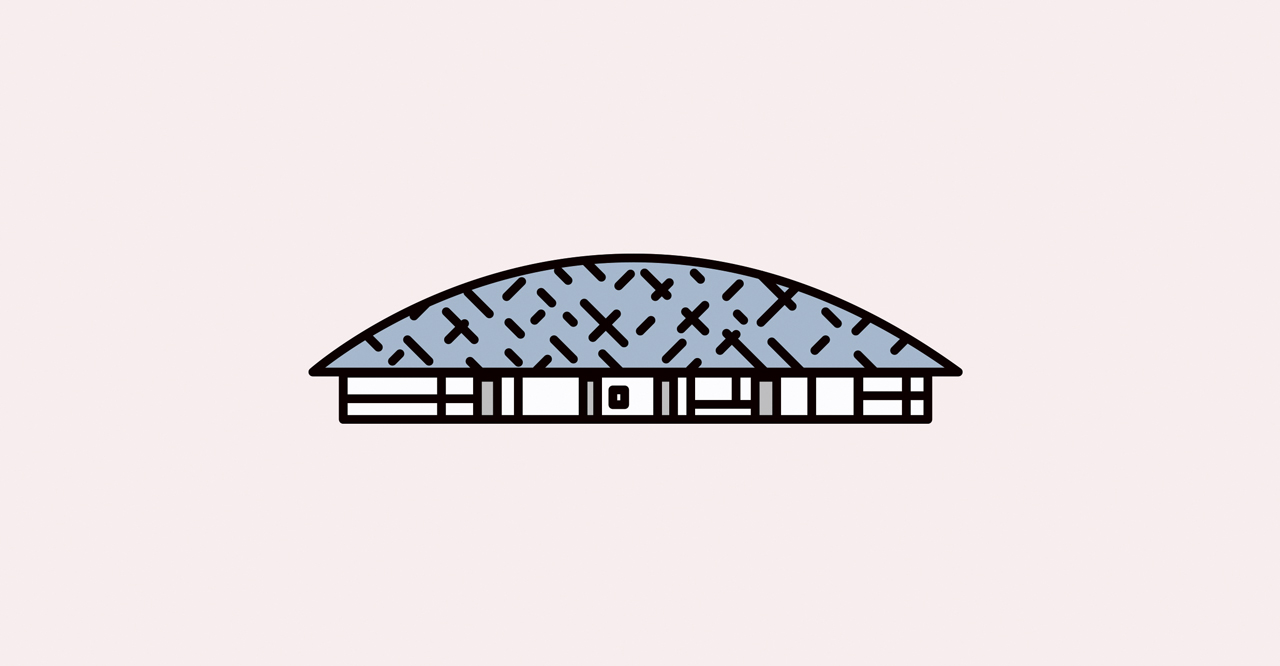
And how does he decide which buildings to draw and thus, visit?
“With Vectors and Stuff, I’m trying to push more of the personal connection people have to these buildings and I’ll post something with a funny quip or my thoughts and opinion on these buildings,” he explains. “I know a lot of my audience aren’t architects or designers, so to them, they would have more of an emotional connection to the building or space from childhood nostalgia. We’ll go inside the old buildings, shops and in the back alleys and the deteriorating areas. It’s just more about just showing them my connection and my history and also their connection, their history.”
Al Ramahi admits he’s been a little slower posting new vectors of late, because his mind is on a “million different things”. But he can be forgiven. The artist has recently taken on the creative role of ideation manager with Miral Asset Management – the developer of the city’s attractions including Ferrari World Abu Dhabi, Yas Waterworld and Warner Bros. World Abu Dhabi. Alongside his fulltime job, managing Vectors and Stuff and the accompanying side projects, Al Ramahi has been navigating his work as a bona fide artist too. He’s worked on commissioned pieces for The Arts Club Dubai, a window mural for Jam Jar Dubai, been part of several exhibitions at Abu Dhabi’s Cultural Foundation, drawn book cover illustrations and had his thought-provoking doodles published.
“I just completed a mural at the Culture Foundation (part of the Murals of History Group exhibition). That’s probably my most recent big thing this year, and it’s my first big mural. I think that’s definitely something I want to keep looking into,” explains Al Ramahi. “But it’s not my main job, it’s just on the side. I’ve been drawing and sketching my whole life. Recently my artwork has evolved more down the illustration route, it’s not fine art anymore because I just don’t have time. The last year has been all digital, straight on the iPad.”
So, what’s next for the artist? He’s a little coy but does divulge that the vectors may find a new audience. “There’s a lot of things happening in the background. There’s a design-ish company related to the government here that did a number of gift packages for all their clients that included pins, a tote bag, a branded coffee with the Vectors and Stuff artwork on it, and there were stickers and a notebook,” he reveals. “And the next step is a fashion item that has some patterns that I’ve designed.”
The side-hustles are stacking up thick and fast; could it be time to leave full-time work?
“I’ve always thought about full time art, but because I’ve just started a new job, I’m trying to find my place and how I can manage both at the same time. Because it’s possible,” he says thoughtfully. “I listening to myself, I’m enjoying life right now in Abu Dhabi post-COVID. I don’t know what path the future might hold.”